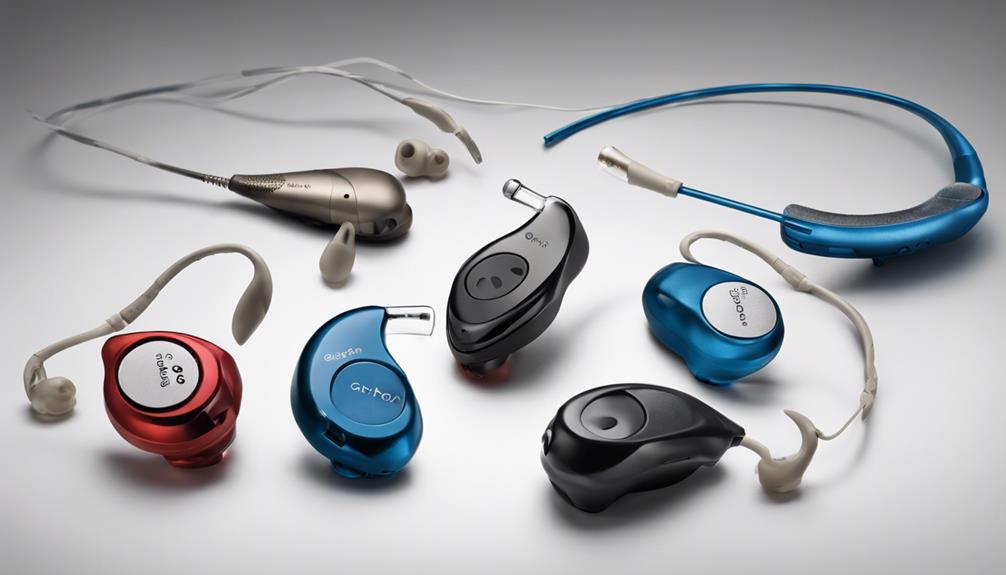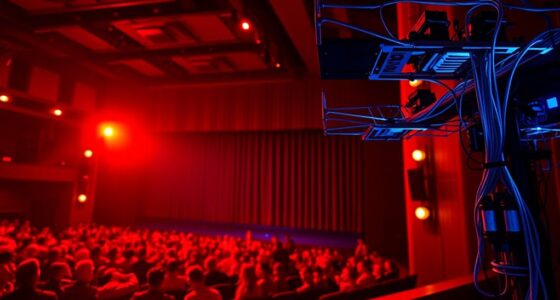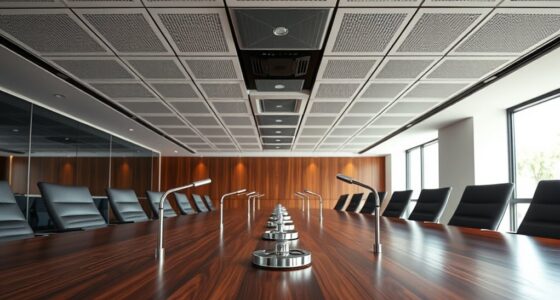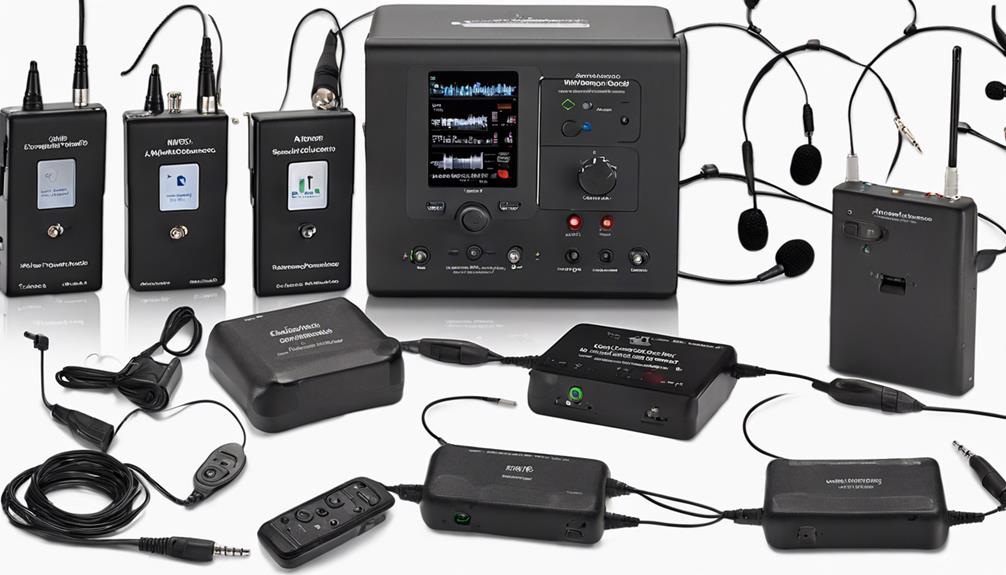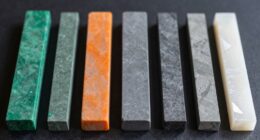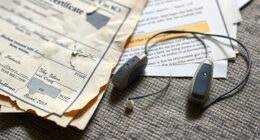Amidst the symphony of noises enveloping us, **discovering harmony** through the assistance of listening devices is akin to discovering the perfect melody. Explore the world of sound with the aid of technology and unlock a whole new auditory experience that will make you truly appreciate the beauty of music.
Among the 10 Cochlear Implant Assistive Listening Devices highlighted, each plays a unique role in orchestrating improved auditory experiences for individuals with cochlear implants.
From Bluetooth Streamers to Wireless Interfaces, each device offers a key to unlocking a richer tapestry of sound.
Join us as we uncover the transformative capabilities of these technologies, shedding light on how they can redefine the way we perceive and engage with the world of sound.
Key Takeaways
- Connectivity enhancers like Bluetooth streamers optimize sound quality and offer seamless streaming from various devices.
- Signal enhancement systems such as FM systems improve speech clarity by enhancing signal-to-noise ratio in noisy environments.
- Assistive listening systems like induction loops and infrared systems enhance auditory experiences in public spaces and events.
- Sound field systems with proper setup ensure clear sound distribution, benefiting all listeners in educational and public settings.
Bluetooth Streamers
Bluetooth streamers seamlessly connect cochlear implants to various Bluetooth-enabled devices, enhancing accessibility to audio content for users. These devices allow for direct streaming of phone calls, music, and audio from different sources to the cochlear implant processor. By offering this direct streaming capability, Bluetooth streamers provide convenience and flexibility to cochlear implant users, enabling them to engage easily with a wide range of audio sources. Manufacturers of cochlear implants recognize the importance of connectivity and often offer Bluetooth streamers as accessories to enhance the user experience.
The integration of Bluetooth streamers with cochlear implants significantly improves the overall listening experience for users. This seamless connection with modern technology allows individuals with cochlear implants to fully participate in phone conversations, enjoy music, and access audio from TVs and other devices effortlessly. The direct streaming feature of Bluetooth streamers ensures that sound quality is optimized, providing a more immersive auditory experience for users of cochlear implants.
Telecoils
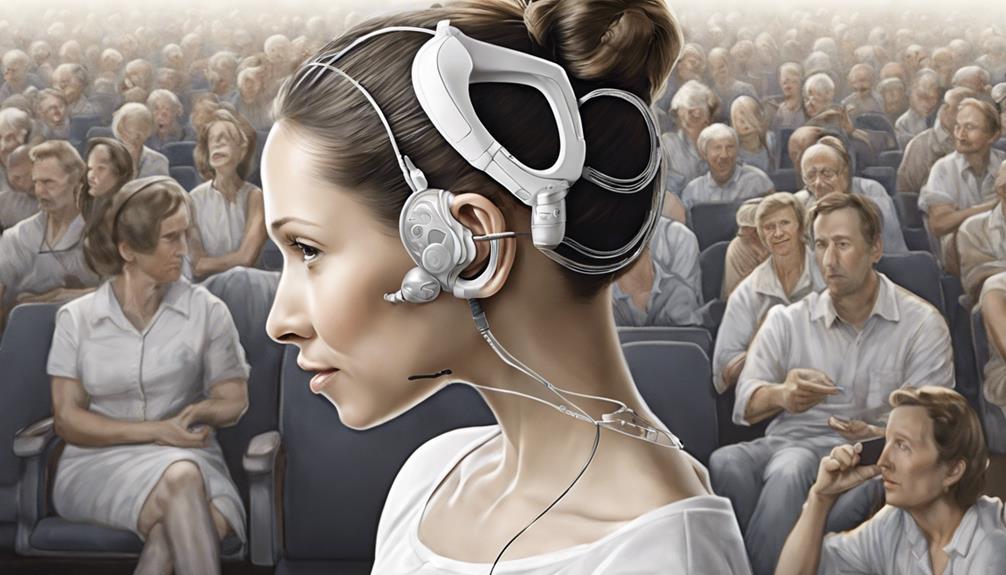
Telecoils are small, yet powerful components that wirelessly connect with the environment, functioning much like a wireless telephone.
All current MED-EL cochlear implant audio processors come equipped with built-in telecoil capabilities, allowing users seamless access to telecoil systems like neck loops.
Activating the telecoil function through the FineTuner device is essential for enhancing sound reception and connecting directly to assistive listening systems.
Telecoil Technology Basics
Utilizing telecoil technology in hearing devices enhances accessibility to sound systems in public venues such as theaters and churches, improving communication for individuals with hearing loss. Telecoils are crucial components that enable users to connect wirelessly to hearing loop systems found in these environments. The electromagnetic field generated by hearing loop systems interacts with telecoils, transmitting sound directly to compatible hearing aids or cochlear implants. This technology is essential for accessing assistive listening systems like induction loops, providing clear and direct sound to individuals with hearing impairments. By incorporating telecoil technology, hearing loop systems offer a cost-effective and efficient solution for delivering sound in various settings, benefiting those with hearing aids or cochlear implants.
| Telecoil Technology Basics |
|---|
| Enhances accessibility to sound systems |
| Utilizes electromagnetic fields |
| Essential for assistive listening systems |
Telecoil Compatible Devices
Transitioning from the importance of telecoil technology in accessing assistive listening systems, telecoil compatible devices, commonly known as telecoils, play a crucial role in wirelessly enhancing sound reception for individuals with hearing aids and cochlear implants. These devices are designed to seamlessly connect with assistive listening systems, providing users with clearer sound quality and improved communication experiences.
Some key points to note about telecoil compatible devices include:
- Telecoils wirelessly connect with the world around you, allowing for improved sound reception.
- All current MED-EL cochlear implant audio processors have built-in telecoil capabilities for enhanced connectivity.
- Telecoils in hearing aids and cochlear implants receive sound wirelessly via an electromagnetic field.
Telecoil Benefits for Users
Enhancing connectivity and sound reception, telecoils provide invaluable benefits for users of assistive listening systems and cochlear implants. Telecoils enable wireless connection to sound signals, directly enhancing the reception of audio.
MED-EL cochlear implant audio processors come equipped with telecoil capabilities, ensuring seamless integration with assistive listening systems. Utilizing a neck loop or the FineTuner device, users can activate the telecoil function for optimal sound clarity.
FM Systems

When navigating challenging listening environments, FM systems, consisting of a microphone/transmitter and a receiver, provide up to a 25-dB advantage for cochlear implant users. These systems play a crucial role in enhancing speech understanding for individuals with cochlear implants.
Here are some key points to understand about FM systems:
- Improved Signal-to-Noise Ratio: FM systems are designed to improve the signal-to-noise ratio, making speech clearer and easier to understand in noisy environments like lecture halls, classrooms, and theaters.
- Wireless Connectivity: These systems offer wireless connectivity, allowing seamless integration with cochlear implant processors such as the OPUS 2 and RONDO.
- Direct Connection: FM systems enable direct connection to devices that generate an FM signal, enhancing speech understanding and overall communication effectiveness for cochlear implant users.
Direct Audio Input
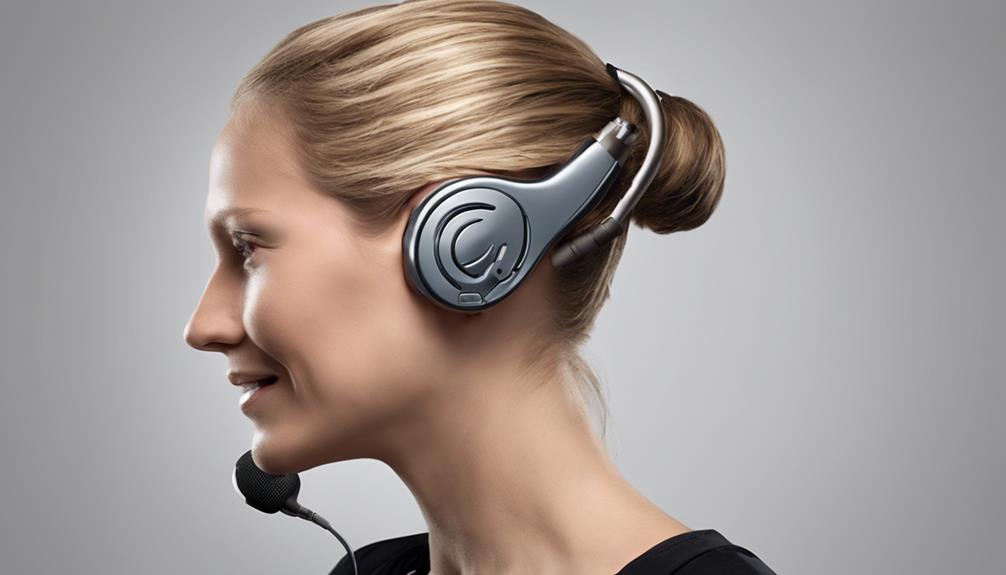
Direct Audio Input is a crucial feature for enhancing the audio experience of cochlear implant users. It allows for a direct connection between the audio processor and audio sources using a 3.5 mm jack. By bypassing the microphone and reducing background noise interference, DAI cables offer improved sound quality and clarity.
The quick and easy DAI connection not only enhances the signal-to-noise ratio but also provides users with seamless audio connectivity. This makes it a valuable asset in the realm of assistive listening devices.
Improved Sound Quality
Utilizing Direct Audio Input (DAI) in cochlear implant technology significantly enhances sound quality by allowing direct connection to audio sources, improving speech and sound understanding.
DAI cables play a crucial role in this process, with different colors indicating the mix of audio input and microphone input.
The use of DAI provides a direct and clear signal without interference, leading to better comprehension of speech and sound.
Additionally, DAI technology contributes to enhancing the signal-to-noise ratio, particularly beneficial in challenging listening environments.
This feature varies in compatibility across different cochlear implant models and brands, highlighting the importance of selecting the appropriate technology for optimal sound quality.
Enhanced Audio Connectivity
To further enhance the auditory experience for cochlear implant users and optimize sound reception, the incorporation of Enhanced Audio Connectivity through Direct Audio Input (DAI) technology is pivotal.
DAI enables users to connect their audio processors directly to audio sources using a 3.5 mm audio jack, bypassing external microphones for improved signal-to-noise ratio. The DAI cables, available in various colors, help distinguish between audio input and microphone input, facilitating clearer sound reception.
Audio processors like those from MED-EL support DAI connections, offering a convenient means to access audio sources. This versatile feature can be utilized with different devices, such as portable music players, enhancing the listening experiences of individuals with cochlear implants.
Induction Loop Systems
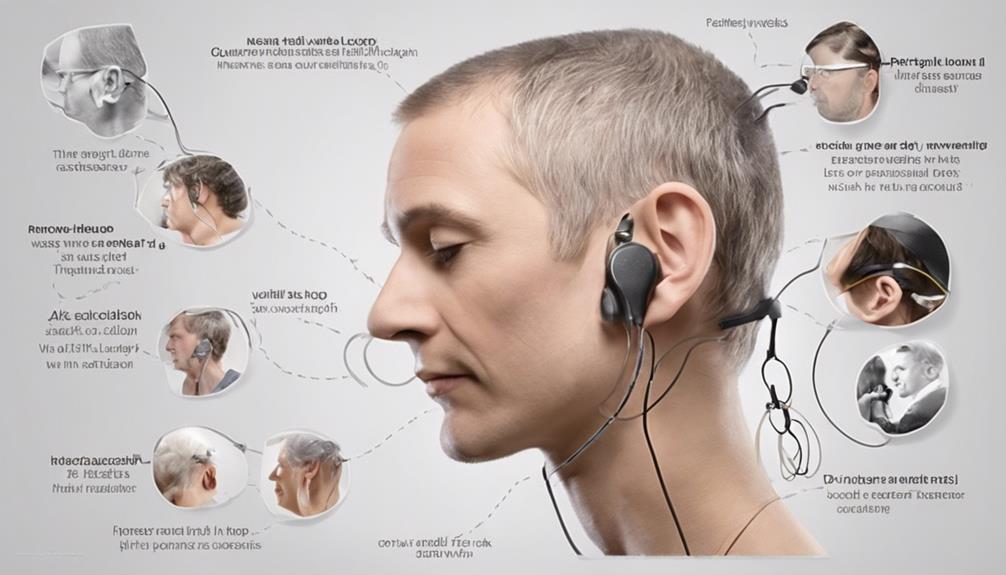
Induction loop systems, powered by electromagnetic induction, significantly enhance sound transmission for cochlear implant users. These systems consist of a wire loop that generates a magnetic field, compatible with telecoils in hearing devices. Cochlear implant users can access induction loop systems in various public places like theaters, churches, and lecture halls.
Here are some key points about induction loop systems:
- The loop system reduces background noise and delivers clear sound directly to the user's hearing device.
- Utilizing telecoil technology, induction loop systems provide improved listening experiences for individuals with hearing loss.
- The electromagnetic signal created by induction loops ensures that individuals with cochlear implants can enjoy a more focused and enhanced auditory experience, especially in environments with ambient noise.
Induction loop systems play a crucial role in improving accessibility and communication for individuals with cochlear implants, offering them a better listening experience in public settings.
Infrared Systems

In environments such as theaters, auditoriums, and conference rooms, Infrared systems efficiently transmit audio signals via IR light waves to provide clear and direct auditory experiences for cochlear implant users. These systems are highly effective in reducing background noise and enhancing speech clarity, making them ideal for individuals with hearing impairments. Users wear IR receivers that pick up signals from IR transmitters strategically placed in the environment, ensuring a seamless audio delivery directly to their cochlear implants. By utilizing infrared technology, these systems offer a focused audio signal, minimizing distractions and maximizing the listening experience for those with cochlear implants.
| Features | Description |
|---|---|
| Transmission Method | IR light waves |
| Common Locations | Theaters, auditoriums, conference rooms |
| User Equipment | IR receivers worn by users to pick up signals |
| Benefits | Clear and direct audio signals, reduced background noise, enhanced speech clarity |
Sound Field Systems

Soundfield systems offer a practical solution for optimizing sound quality in various settings through the use of wireless microphones and strategically positioned speakers. This technology ensures clear and evenly distributed sound, benefiting all listeners by enhancing speech intelligibility.
Sound Field Benefits
Enhancing the listening environment for cochlear implant users, sound field systems consist of wireless microphones that transmit sound to strategically placed speakers in a room, providing clear and amplified sound to overcome background noise and reverberation. These systems benefit individuals by enhancing speech intelligibility in various settings.
Sound Field Benefits:
- Improved communication in classrooms, meetings, and public spaces.
- Increased inclusivity and accessibility for individuals with hearing loss.
- Enhanced listening experience by reducing the impact of background noise and reverberation.
Sound field systems play a crucial role in creating a conducive auditory environment for cochlear implant users, ensuring better comprehension and communication opportunities in challenging listening situations.
System Setup Guide
To ensure optimal functionality and benefit from sound field systems, a systematic approach to the setup and placement of speakers is crucial. Sound field systems, incorporating wireless microphones and strategically positioned speakers, are integral in enhancing sound clarity and minimizing background noise for individuals with cochlear implants.
For individuals utilizing assistive listening devices (ALDs) like FM systems or Induction loop systems, understanding how to correctly install and position the speakers is paramount. In educational environments such as classrooms, these systems play a vital role in ensuring all students, including those with hearing loss, can effectively hear and engage in communication.
Proper setup of sound field systems not only improves speech understanding but also fosters better overall communication experiences for individuals with hearing impairments.
External Microphones

External microphones play a crucial role in enhancing sound reception for cochlear implant users by capturing and transmitting clearer audio signals. These miniature devices can significantly improve the listening experience in various environments.
Here are three essential points about external microphones for cochlear implant users:
- Discreet Placement: External microphones can be discreetly worn or placed near the sound source, ensuring a better signal-to-noise ratio and improved audio clarity.
- Mini Microphones: Mini microphones, such as Roger Pens, are specifically designed to enhance speech understanding in challenging settings, making conversations more accessible for cochlear implant users.
- Wireless Connectivity: Many external microphones can wirelessly connect to cochlear implant audio processors, allowing for seamless integration and providing users with enhanced listening experiences.
These external microphones serve as valuable accessories for cochlear implant users, particularly in noisy environments or situations where the sound source is distant. By incorporating external microphones into their listening setup, users can enjoy clearer and more precise audio input, ultimately enhancing their overall hearing experience.
Wireless Interfaces
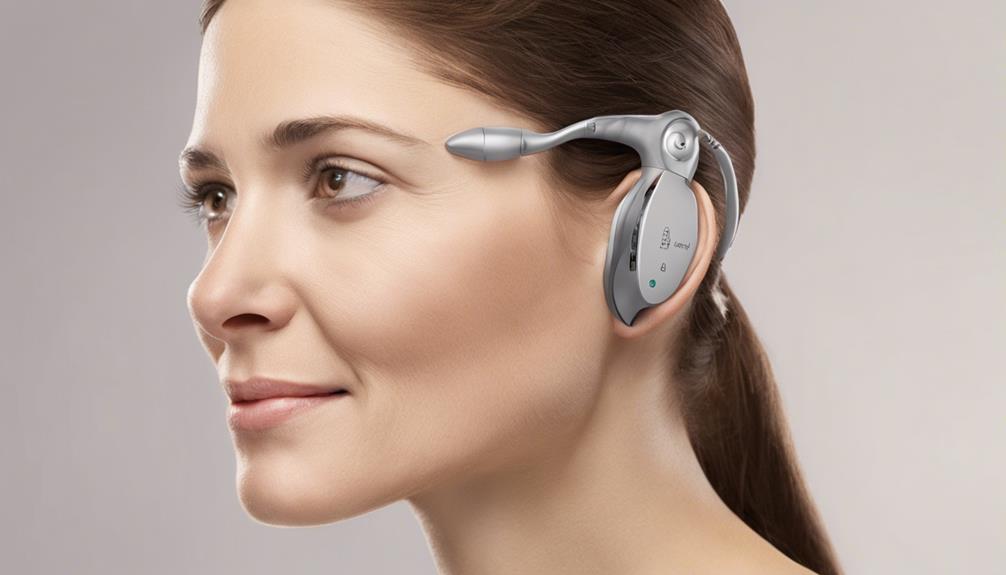
Wireless interfaces, such as TV streamers and ComPilot, offer cochlear implant users the ability to stream audio directly to their devices, providing seamless connectivity with multimedia devices. These interfaces are designed to enhance the listening experience and make it more convenient for users to connect with various audio sources. In addition to wireless interfaces, external microphones play a crucial role in helping users hear more clearly in noisy environments. These microphones can improve speech understanding and reduce background noise, contributing to an overall better listening experience. Moreover, phone clips are another type of wireless interface that allows users to connect their cochlear implant devices to mobile phones, enabling hands-free communication. By utilizing built-in Bluetooth technology, cochlear implant devices can easily stream audio from smartphones and other Bluetooth-enabled devices, offering users a versatile and accessible listening experience.
| Wireless Interfaces | Description | Benefits |
|---|---|---|
| TV Streamers | Stream audio to devices | Seamless connectivity with TVs and media |
| ComPilot | Audio streaming interface | Easy connection with multimedia devices |
| Phone Clips | Connect devices to phones | Hands-free communication with mobile phones |
Captioning

Captioning technology, an essential tool for individuals with hearing loss, provides text-based representation of spoken content, enhancing accessibility in various media formats. For cochlear implant users, captioning plays a crucial role in ensuring they can fully engage with movies, TV shows, live events, and other forms of entertainment. Real-time captioning is particularly beneficial as it provides immediate text display of spoken words, allowing users to follow conversations or narratives without delay.
Some key points to consider about captioning include:
- Open/closed captions offer permanent or toggleable text on screens.
- Real-time captioning provides immediate transcription of spoken words.
- Subtitles display translations or transcriptions of dialogue in videos.
Frequently Asked Questions
What Are the Assistive Devices for Cochlear Implants?
We'll cover various assistive devices for cochlear implants, such as direct audio input, FM systems, induction loops, infrared systems, and soundfield systems.
FM systems can offer up to a 25-dB advantage in challenging listening environments.
Induction loops improve the signal-to-noise ratio using electromagnetic induction.
Infrared systems transmit signals through IR light waves to reduce background noise.
Soundfield systems employ wireless microphones and speakers to enhance listening experiences.
What Are the Four Major Types of Assistive Listening Devices?
We'll cover the four main types of assistive listening devices for cochlear implant users: FM systems, induction loop systems, infrared systems, and soundfield systems.
Each type offers unique advantages in improving sound clarity and reducing background noise for better listening experiences. FM systems provide a significant up to a 25-dB advantage in challenging environments, while induction loop systems use electromagnetic induction for enhanced signal-to-noise ratio.
Infrared systems transmit signals via IR light waves, and soundfield systems utilize wireless microphones and strategically placed speakers.
What Can't You Do With a Cochlear Implant?
We can't expect cochlear implants to restore normal hearing completely. While they offer improved sound perception, they won't replicate the intricate functions of the natural ear.
While they significantly enhance communication, they may not eliminate the need for lipreading, especially in noisy environments. Ongoing therapy and auditory training are crucial for maximizing their benefits.
Cochlear implants might still present challenges in complex listening situations, despite their advancements.
What Devices Are Used in Cochlear Implants?
When discussing the devices used in cochlear implants, it's important to understand the various components involved. These include:
- A microphone
- Speech processor
- Transmitter
- Electrode array
Each part plays a crucial role in capturing, processing, and transmitting sound signals to stimulate the auditory nerve.
This process ultimately helps individuals with hearing loss in understanding speech.
Cochlear implants may not restore normal hearing, but they can significantly improve one's ability to perceive sound.
Conclusion
In conclusion, assistive listening devices play a crucial role in enhancing the auditory experience for cochlear implant users.
For example, imagine Sarah, a cochlear implant recipient, effortlessly connecting her Bluetooth streamer to her phone and enjoying crystal clear sound during a phone call.
These technologies not only improve communication in various environments but also empower individuals to fully participate in conversations and activities.
Explore the diverse options available and discover the perfect assistive listening device for your needs today.

